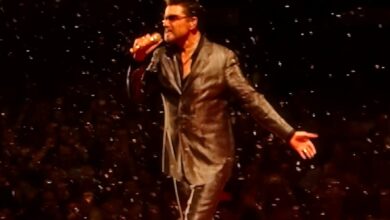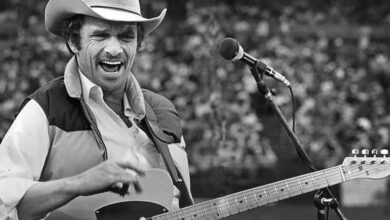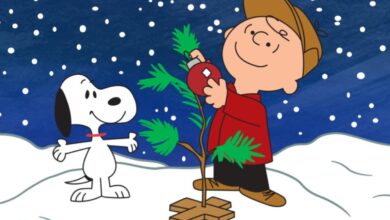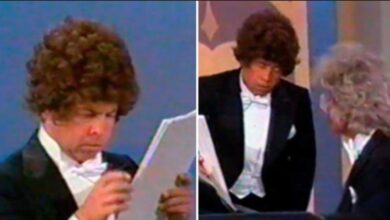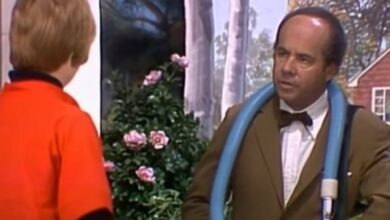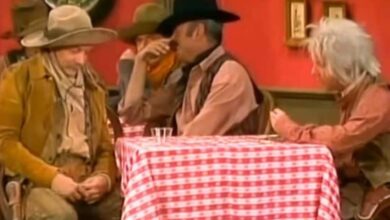Archie Campbell and Roy Clark: The Night Country Comedy Laughed Itself Breathless
Archie Campbell stepped onto the stage not just as a comedian, but as the beating heart of a kind of country-corn genius that only rarely visits the world. Though it’s difficult to pin down a single “concert” for him and his frequent collaborator Roy Clark, the spirit of their live-performance energy lives in the many episodes and live tours of Hee Haw and occasional live shows tied to the cast. Over the years, that energy built into something more than sketches — a genuine live entertainment phenomenon that blended laughter, music, and the warmth of rural-town America.
Campbell’s roots were humble: born in a small Tennessee town, he had the sort of voice and comic sensibility that felt like it belonged to a front-porch joke session, not a television studio. But when he arrived at Hee Haw, his blend of dry wit, deadpan timing, and storyteller’s charm grounded the show in authenticity. He didn’t perform just jokes or songs — he embodied a mood that felt like home. Audiences didn’t laugh merely at punchlines: they recognized something familiar, reassuring, and timeless.
On Hee Haw, Campbell frequently played the local barber, the bumbling doctor, or the rustic philosopher — roles that, in his hands, became living caricatures, over-the-top but never far from genuine rural life. Alongside him, Roy Clark provided musical virtuosity, delivering guitar, banjo, mandolin or fiddle with effortless skill. Clark could light up a room with a tune, then sit back and play the perfect straight man to Campbell’s comedy. Their chemistry was magical: a master and the jester, feeding off each other’s timing and presence — and feeding the audience in turn.
During Hee Haw’s peak years, the format involved studio tapings roughly twice per year, often compressed into marathon schedules. That meant that at the end of a recording week, there would sometimes be tours or live appearances by the cast — giving fans a rare chance to see that same Hee Haw magic in a concert-style setting. For many in that era, a “show” by Campbell and Clark was as much about laughter as it was about music, a shared communal release of joy and nostalgia.
Imagine a summer night in a small town hall, or fairground — people arriving in boots and denim, some with families, others just looking for a laugh. On stage stands Roy Clark, nimble fingers ready on guitar, and Archie Campbell, eyes twinkling, maybe a straw hat cocked at an angle. Conversation begins like a casual chat: a story about town gossip, a quip about the preacher’s mule, something country and silly. The audience chuckles. Then Clark starts a tune, light and familiar. A hush falls. People lean forward. Music — real, homegrown, intimate.
And then Campbell delivers a line: unexpected, corny, absurd — and laughter bursts, loud and honest, ripping through the hall. Maybe someone in the crowd claps; someone else wipes away tears. By the time the song ends and the bit is over, the air feels warmer. Shared. Alive. That was the kind of concert capable of leaving people physically wracked by laughter or touched by a chord that felt like home.
For viewers at home, the television version of Hee Haw carried that same vibe — a kind of country carnival, but one rooted in real voices, familiar rhythms, and a sense of community. The segments with Campbell and Clark weren’t just comedy sketches or musical numbers: they were episodes of affection, cultural memory, and small-town charm. And when those episodes were broadcast week after week, people began to feel like they belonged — to Kornfield Kounty, to the porch, to the laughter, to something larger than themselves.
It’s no wonder, then, that decades later, watching a clip of Campbell and Clark sends hearts racing. There’s something timeless about the way they interacted — quick glances, a pause before a punchline, a perfectly timed strum. Even today, the humor doesn’t feel old. It feels honest. It feels like a moment suspended, unspoiled by cynicism or over-production. It feels real in a way few performances manage.
Of course, with time, some of the context is lost. The small-town references, the dialect, the pace — they may not translate instantly to younger audiences used to sharp-edged irony or polished stand-up. But that doesn’t change the power of a moment when laughter overwhelms even the performers. There’s something humbling, even sacred, in watching someone — whether audience or actor — surrender completely to joy and absurdity. That willingness to laugh at yourself, to let go, is part of the magic Campbell and Clark created.
Between the laughter and the music, there’s a heartbeat of community. The people in the audience are laughing together, clapping together, sometimes wiping away tears together. The performers on stage — they, too, share a pulse. The stage lights, the wooden floorboards, the crackle of a corduroy jacket, the rasp of an old guitar — all become part of a living tapestry, a celebration of everyday folks and their stories. And for a couple of hours, the world outside fades, and everyone shares in something simple, warm, and human.
It’s why rediscovered clips — like the one you mentioned — hit so hard. They aren’t just funny or nostalgic. They’re proof that there was once a space where comedy and music danced together, where no one cared if you laughed too loud or cried too much. They remind us that a deadpan joke in the right moment can shake even the most composed of people. They remind us that real connection doesn’t need a stage bigger than ten feet wide, or lights brighter than the moon rising over a small Tennessee town.
But beyond the warm fuzzy feeling, there’s also a kind of history in those moments. The culture of country comedy, the blending of vaudeville-style sketches with down-home music — that was rare. Some might say it was simple, or corny. But in its simplicity lay depth: community, roots, laughter under the same roof that had once heard fiddle tunes at church socials and square dances. Watching Campbell and Clark is like peering into a living scrapbook of American rural life, frozen in laughter and melody.
And perhaps that’s why the legacy of Archie Campbell endures. Not just because he was funny — though he was, with eerie precision — but because he represented a voice: humble, human, unpretentious, and real. He didn’t need flashy gimmicks or edgy punchlines. He needed a story, a scythe, a gentle drawl, and an audience willing to laugh with him. And when paired with Roy Clark’s musical brilliance, that was enough to leave even the performers themselves undone by laughter.
Today, when we watch those old clips, we’re not just watching for nostalgia’s sake. We’re remembering something lost — a kind of innocence, a shared laugh, a community under the same spotlight. We remember the nights when a hatchet-cheeked barber from Bulls Gap could make you howl, and a banjo in the right hands could sound like home. We remember that sometimes the simplest jokes, spoken softly and timed perfectly, are the ones that echo longest.
